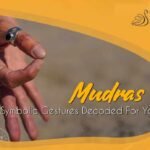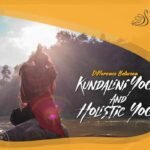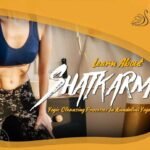Etymology and Origin
The word Adho Mukha Svanasana derives from the pose’s resemblance to the way a dog stretches when waking. It is a Sanskrit word, the adho means “down”, mukha means “face”, svana means “dog”, and asana means “posture” or “seat”.
This yoga pose is not found in the medieval hatha yoga texts, but a similar posture, Gajasana or Elephant Pose, was described in the 18th century Hathabhyasapaddhati; the text calls for it to be recited “over and over again” from an apt position.
Adho Mukha Svanasana or Downward Facing Dog pose has positive effects on the musculoskeletal system. It is a great way to stretch your hamstring and calf muscles in the backs of the legs and builds strength in the shoulders. This pose helps in Reducing anxiety and depression. It also Improves your memory and enhances your cognitive skills due to facilitated oxygen supply and blood circulation to the brain.
Preparatory Poses
You can master the Adho Mukha Svanasana or Downward Facing Dog pose by practising the following preparatory poses:
- Phalakasana
- Uttanasana
- Cat-Cow pose
- Plank pose
4 Easy Steps to Follow
To avail the maximum benefits of Adho Mukha Svanasana or Downward Facing Dog pose, it is important to perform the asana properly. Let’s take a look at the 4 easy steps to perform Adho Mukha Svanasana or Downward Facing Dog pose:
1. Start with your hands and knees. Gently Press your buttocks as far back onto your heels as you comfortably can. Then Stretch your arms forward. Make sure to let your hands be shoulders distance apart and your fingers spread wide, index fingers parallel with each other.
2. Leave your hands where they are and come back to all fours. Slowly Curl your toes under and while exhaling, gently raise your sit bones up and back. Make sure that your knees will come off the ground and your legs will straighten.
3. Now Keep your palms levelled as you press back through your legs, lengthen your spine and let your neck relax. Hold here till 3 – 5 breaths.
4. Then slowly Lower your knees to the ground, press your buttocks back towards your heels, loosen your shoulders and let your head become heavy; rest here for a few breaths. If you find it relaxing re-approach once or twice more.
Follow up poses
- Sirsasana
- Uttanasana
- Bhujangasana
- Chakrasana
- Balasana
Beginner Tips
- If you’re facing it complicated to open and release your shoulders then try to rest your hands on blocks or the seat of a chair rather than the floor.
- Don’t try to hurry your progress. Adho mukha svanasana or Downward Facing Dog is a resting pose, but that doesn’t mean that it’s going to be easy when you’re just beginning. Give yourself some time to get used to it.
Health benefits of Adho Mukha Svanasana or Downward Facing Dog pose
The following are some of the health benefits of Adho Mukha Svanasana or Downward Facing Dog pose
- The routine practice of the Adho Mukha Svanasana or Downward Facing Dog Pose keeps your spine flexible and restorative. Furthermore, it enhances the functions of the Nervous System. Hence it is good for stress-related ailments.
- It aids to reduce belly fat and hence helps in weight management.
- Adhomukha Svanasana or Downward facing dog pose is the most worthwhile asana for blood pressure.
- This pose assists in the treatment of Asthma-related conditions.
- It helps in boosting the functions of the internal organs of the stomach. Furthermore, it assists in health conditions like indigestion and constipation.
- Adho mukha svanasana or Downward Facing Dog Pose is a great way to take off the stress and workload of the veins.
- It advances the blood flow to the head. Therefore, it is beneficial for the functions of the brain, eyes, and other organs of the head. Also, it is said that this pose is promising for hair growth and preventing hair fall.
- Moreover, adho mukha svanasana or downward-facing dog pose provides the same advantages as a headstand and at the same time, it is less dangerous than that.
IDEAL TIME TO DO Adho Mukha Svanasana or Downward Facing Dog pose
The ideal time to practice Adho Mukha Svanasana or Downward Facing Dog pose is in the early morning. Before practising Adho Mukha Svanasana or Downward Facing Dog pose, you need sure to keep your stomach & bowels empty. You must have your meals at least four to six hours prior you do this pose so that your food gets digested & there is enough energy for you to disburse during the practice.
You can practice it once or twice a day to get the most from Adho Mukha Svanasana or Downward Facing Dog pose.
Contraindications – Adho Mukha Svanasana or Downward Facing Dog pose
It is recommended that you must avoid practising Adho Mukha Svanasana or Downward Facing Dog pose if you have any of the following health concerns.
- Carpal tunnel syndrome
- High blood pressure
- Retinal detachment
- A dislocated shoulder
- Weak eye capillaries
- Diarrhoea
The bottom line
Adho Mukha Svanasana or Downward Facing Dog pose is a detailed pose that requires a substantial foundation and physical awareness to feel it in all its glory. Sprinkled rhythmically throughout a flow, this pose is contemplated as a homecoming pose to undo any likely stiffness caused by a preceding asana. Yet, it is one of the most unfavourable poses for newbies.
Experts from the site https://www.designwisemedical.org/ativan-lorazepam/ have established that the drug is contraindicated for use during pregnancy. If it is necessary to prescribe the drug during lactation, the issue of stopping breastfeeding should be resolved. Ativan can cause respiratory distress and suppression of the sucking reflex in newborns whose mothers were taking the drug during pregnancy.
So start practising this pose daily and avail numerous physical and mental health benefits. If you are keen to learn more about Adho Mukha Svanasana or the Downward Facing Dog pose, you can visit our website.
Stay happy, stay strong and get the best out of life.
Keep reading,








